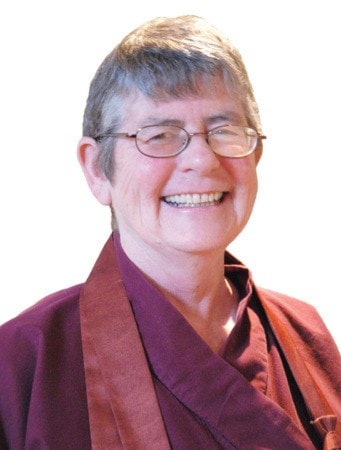There are two aspects to taking refuge in the Buddha. At the literal level, we take refuge in the historical Buddha as an example of someone worthy of emulation. The Buddha was not a god. He was an ordinary human being, like you and I, who saw through the deceptions of life, both on the ordinary and spiritual levels. He found the awakened mind by relating with the confusion and insanity all around him. He looked at those situations clearly and then recognized that his own mind was the source of this chaos and confusion. Then he disciplined his mind and attained enlightenment.
When we take refuge in the Buddha, we take refuge in the example of his life. He started out in the same kind of life that we lead, with the same confusions. But he renounced that life in order to find truth. He, like us, was raised in a theistic society that believed in a god who would rescue people from their suffering. But he saw that there were problems with that, so instead of looking for an outside solution, he looked inwards. Taking refuge in the Buddha involves realizing that our stories are comparable with his, and then deciding to follow his example and do what he did.
One of the big steps in the Buddha’s development was his realization that there is no reason he should believe in, or expect, anything greater than the basic inspiration that already existed within in him. In Zen we call this basic inspiration “Buddha nature.” Taking refuge in our innermost nature is the second level of taking refuge in the Buddha. When we take refuge in the Buddha, we take refuge in our own enlightened nature, our own experience, our own potential to be kind, generous peaceful disciplined and wise.
It is the human mind that has created the chaos and confusion around us, and it is the human mind can transform that chaos to peace and harmony. When we take refuge in the Buddha, we learn to transform anger into compassion, greed to generosity, cruelty to kindness, impatience to patience and harmful impulse to self-discipline.
In a way, you could say that taking refuge in the Buddha describes what we do when we meditate. We stop believing our thoughts and find a deeper mind that is beyond our conditioning. When we take refuge in the Buddha, we recognize that so long as we’re dwelling in our thoughts, as long as we’re trying to find some escape or mindless entertainment we’re going to be intermittently unhappy.
Taking refuge in the Buddha means both following the example of the Buddha’s life and taking refuge in our own Buddha nature, which is deeper and wiser than our thoughts and conditioned beliefs.
Suggested practice: For the next two weeks, notice when you get lost in thinking, let that thinking go and bring your attention to your breath. Notice how doing this over and over brings relaxation, and often an insight into how to solve confusion in your daily life.
Kuya Minogue is resident teacher at the Creston Zen Centre and will be offering classes on the 16 precepts of Soto Zen Buddhism at 7 p.m. on Thursday evenings from Feb. 27-April 17. For more information, visit www.zenwords.net or call her at 250-428-6500.
